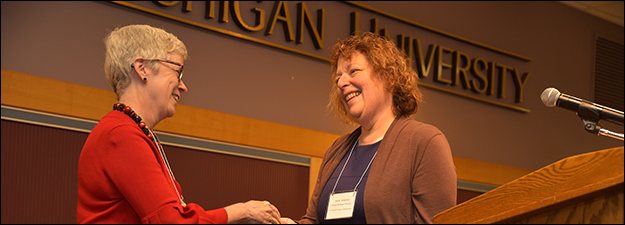Medieval Art and Failure (A Roundtable)
Sponsoring Organization(s)
Special Session
Organizer Name
Gerry Guest
Organizer Affiliation
John Carroll Univ.
Presider Name
Gerry Guest
Paper Title 1
The Failures of Perceiving Failures in Medieval Art
Presenter 1 Name
Roland Betancourt
Presenter 1 Affiliation
Institute for Advanced Study/Univ. of California-Irvine
Paper Title 2
"Shapelessness" in the Middle English Romance
Presenter 2 Name
Hannah M. Christensen
Presenter 2 Affiliation
Univ. of Chicago
Paper Title 3
Erased Faces: Vandalizing Images in Hagiographic Manuscripts
Presenter 3 Name
Kyunghee Pyun
Presenter 3 Affiliation
Fashion Institute of Technology
Paper Title 4
Failure to Transmit
Presenter 4 Name
Alexa Sand
Presenter 4 Affiliation
Utah State Univ.
Start Date
11-5-2017 7:30 PM
Session Location
Fetzer 2020
Description
Medieval Art & Failure (A Roundtable)
What might it mean to describe a work of medieval art as a failure or as a partial failure? This roundtable seeks answers to that question, which has largely been unexplored by scholars in the field. One way that we might begin to theorize the issue is by considering temporality. Medieval objects and medieval images, by and large, were made to serve specific purposes with an eye toward use into the near or even distant future. Taken in this sense, works of art might “fail” for a variety of reasons. Some of these reasons might involve communicative and/or ideological efficacy. Medieval images were often created, in part, for rhetorical purposes. If the rhetoric of the image is found to be unpersuasive, an image might be deemed a failure. Alternatively, an artwork’s perceived failure might be rooted in aesthetics; works judged to be out of style might get taken down or re-made. In other cases, medieval objects might be neglected due to material or functional failings. Finally, gifts might re-gifted, pawned, or neglected rather than kept or used. Other conceptualizations of failure in relation to the history of medieval art are certainly possible and welcome.
Gerry Guest
Medieval Art and Failure (A Roundtable)
Fetzer 2020
Medieval Art & Failure (A Roundtable)
What might it mean to describe a work of medieval art as a failure or as a partial failure? This roundtable seeks answers to that question, which has largely been unexplored by scholars in the field. One way that we might begin to theorize the issue is by considering temporality. Medieval objects and medieval images, by and large, were made to serve specific purposes with an eye toward use into the near or even distant future. Taken in this sense, works of art might “fail” for a variety of reasons. Some of these reasons might involve communicative and/or ideological efficacy. Medieval images were often created, in part, for rhetorical purposes. If the rhetoric of the image is found to be unpersuasive, an image might be deemed a failure. Alternatively, an artwork’s perceived failure might be rooted in aesthetics; works judged to be out of style might get taken down or re-made. In other cases, medieval objects might be neglected due to material or functional failings. Finally, gifts might re-gifted, pawned, or neglected rather than kept or used. Other conceptualizations of failure in relation to the history of medieval art are certainly possible and welcome.
Gerry Guest


